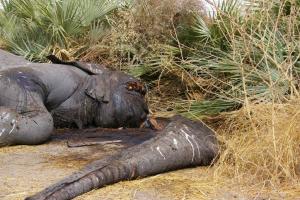Stopping elephant poachers

Radioactive residue from the Cold War could provide a valuable tool for stemming the deadly trade in illegal ivory, National Geographic News reports. Poachers killed an estimated 30,000 African elephants last year alone for their tusks—an ongoing slaughter that threatens the long-term survival of the species, whose population numbers about 500,000. Ending poaching has been nearly impossible because it is legal to own ivory from elephants killed before 1989, and ivory is difficult to date.
But now researchers at Columbia University have developed a test that can determine when a piece of ivory was harvested based on levels of arbon 14, a radioactive isotope that was released into the atmosphere by nuclear tests in the 1950s and ’60s.
Atmospheric levels of carbon 14 have been declining at ill- a steady rate ever since the tests stopped, and so has its presence in plants and in the hair, horns, and tusks of animals. By testing carbon 14 concentrations in tusks, scientists can now tell when the elephant died. “It is a simple, accurate, and affordable test,” says study author Kevin Uno, “and will make it far easier to enforce the ivory ban.”

 Print
Print